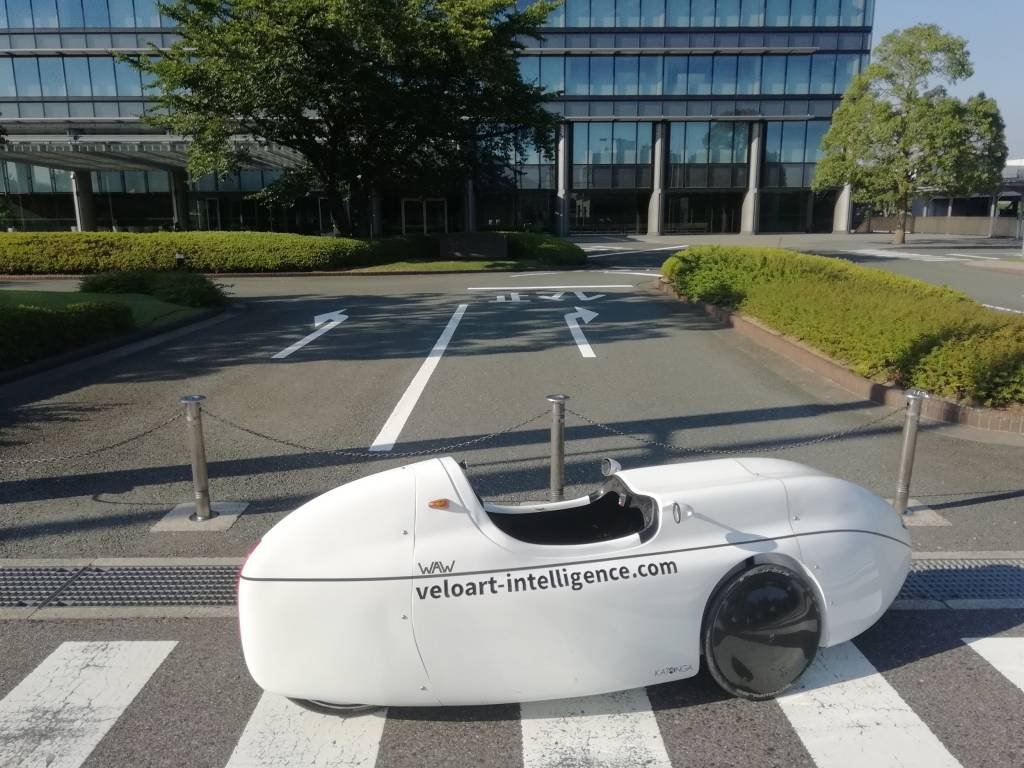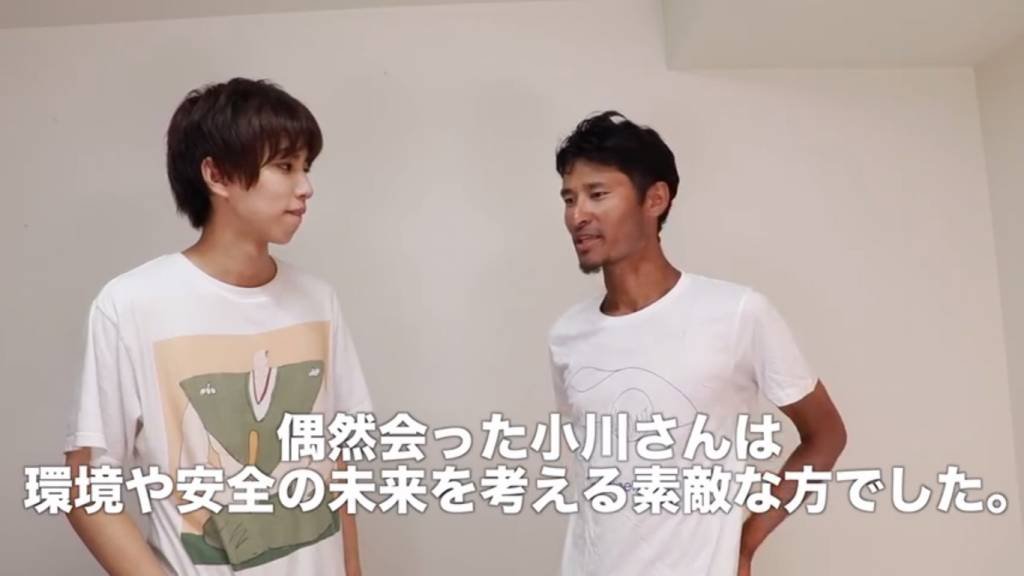
The perfect solution for salarymen who hate crowded trains and have an extra $10k lying around.
Until a few months ago forty-year-old Masahiro Ogawa had a secure job helping develop autonomous vehicles for the Japanese automobile giant Toyota. However, in March after 13 years at Toyota he kissed that job goodbye and set out on a quest to show people in Japan what he thinks could be the future of transportation.
The WAW by Katanga
“When I was working at Toyota I was always looking for next generation vehicles because current vehicles have a lot of deficits,” said Ogawa in an interview with Japankyo. “They’re not so safe and bad for the environment.” Motivated by this desire to find something better than conventional cars, Ogawa’s search eventually led him to the human-powered vehicles known as velomobiles.
Super easy to park
Although many different types of velomobiles exist, Ogawa set his sights on one called the WAW. Made by a company in the Czech Republic called Katanga and costing around $10,000 USD, the WAW is a three-wheeled pedal-powered road vehicle with a highly aerodynamic teardrop-shaped carbon fiber body. It is incredibly compact, coming in at 87 cm (34.3″) high, 287 (113″) cm long and 68 cm (28″) wide. For added safety the WAW even comes with fully functional headlights and turn signals, both of which are powered by a removable and easy to recharge battery.

Ogawa also points out that aside from being a much more environmentally-friendly and healthy alternative to normal cars, the WAW is also very fast. The top speed Ogawa says a WAW can reach is 84 kph (52.2 mph) downhill. Other benefits include not having to get a costly driver’s license, insurance or having to wear a helmet, since velomobiles are essentially treated the same as bicycles in Japan.
Switch on the headlights at night and make the WAW look like it’s smiling
Despite having been around for many decades, most people are completely unfamiliar with velomobiles. Because of this, Ogawa is currently devoting all of his time and energy to promotion and sales of the WAW. As part of his sales push, in July Ogawa went on a tour of most of Japan’s main island of Honshu in a WAW. Starting in Kyoto he first pedaled his way west to Okayama Prefecture and then headed up to Sendai in Miyagi Prefecture. Along the way Ogawa says that many people offered him food, drinks, and even lodging. It was on the 16th day of this tour, as he was making his way back to Kyoto, when Ogawa says he made his first sale and it was to none other than one of Japan’s most famous YouTubers, Hajimeshacho.
Hajimeshacho (left) and Masahiro Ogawa (right)

In a video Hajimeshacho released about his purchase of the WAW (see below), the YouTuber explains that he just happened to come across Ogawa and the WAW on the street and fell in love with the vehicle at first sight, so he decided to buy it. The high price tag of the WAW was not a deterrent either since Hajimeshacho was already looking to spend 1 million yen on something as part of a video series in which he does exactly that. Ogawa says he gave Hajimeshacho an extra discount and left the WAW at 980,000 JPY ($8,824 USD) because it was used.
Skip to 5:00 to see Hajimeshacho ride around in the WAW
Ogawa is currently selling two types of WAWs: a heavier “comfortable” type (36.51 kg/80.5 lb), which comes with a suspension system for a smoother ride, and a lighter “sportive” type (30.84 kg/68 lb), which sacrifices comfort for a bit more speed. The current full price of the comfortable type is 1.2 million yen ($10,805 USD), while the sportive costs 1 million ($9,004 USD. However, for the time being Ogawa is offering a %10 discount.
You can cover up the WAW in inclimate conditions to protect the interior
After a person purchases a WAW it takes two months to get ready and deliver. After it has arrived, Ogawa says some minimal assembly is required but it is very easy.
An overview of a WAW in English
With only one sale so far, the aversion many in Japan have to “sticking out,” and no steady income, it’s clear that Ogawa has many hurdles to overcome before velomobiles become a common thing in Japan. However, he seems determined to not let these challenges get in his way. Ogawa is continuing his sales push by approaching government offices and even soccer teams. He is also already thinking of different designs for velomobiles, including one which has a second seat so that parents can ride with their children. Next month he plans to start teaching programming classes to children so that he can earn money and keep working on promoting the WAW. Whether Ogawa’s big gamble will pay off in any significant way is a total uncertainty at this point, but with Hajimeshacho’s video having gotten over 3.5 million views, one can’t help but think that perhaps this may be the start of something very interesting.
If you’re in Japan and interested in purchasing a WAW, you should get in touch with Ogawa. His contact info can be found here.
Source: Interview with Masahiro Ogawa, Hajimeshacho YouTube, Veloart Intelligence Homepage
Images of WAW: Courtesy of Masahiro Ogawa (Veloart Intelligence)
Image of Hajimeshacho and Masahiro Ogawa: 100万円】未来の自転車がヤバすぎたので買いましたwwwwww (Hajimeshacho YouTube)

















